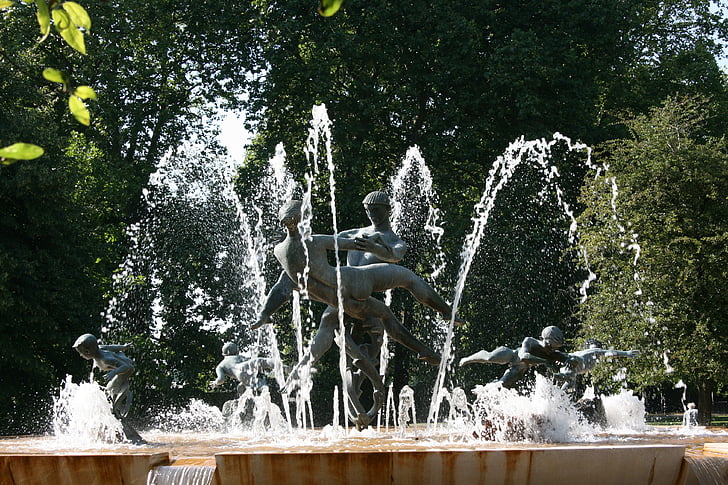Cheapest country to live in is an exciting and attractive topic. Imagine waking up to the sound of waves crashing on a tropical beach, savoring a fresh breakfast for less than the cost of your morning coffee back home, and strolling through bustling markets filled with vibrant colors and exotic aromas. For many, this dream lifestyle might seem like a luxury reserved for the ultra – wealthy, but in some corners of the world, it’s a reality that comes with an affordable price tag. Whether you’re a digital nomad seeking a wallet-friendly base, a retiree dreaming of stretching your savings, or simply an adventurer looking to experience more for less, there are incredible destinations where living well doesn’t mean spending big.
In this blog, we’ll uncover some of the cheapest countries to live in, where comfort, culture, and affordability blend seamlessly to create the perfect backdrop for a life well – lived.
Factors That Make a Country Affordable
- Accommodation
One of the biggest expenses for individuals living in any country is accommodation. A country’s affordability largely depends on the average cost of rent or property prices for homeowners. Typically, rent is cheaper in smaller towns or rural areas compared to major cities.
- Food
The cost of food is a significant factor in a country’s affordability. Locally sourced foods like fruits, vegetables, rice, and meats are generally cheaper than imported goods.
- Transportation
Countries with well-developed and affordable public transportation systems make it easier for residents to commute without owning a car.
- Healthcare
Healthcare costs vary greatly across countries, with public healthcare systems often being more affordable for residents than private care.
- Education
The cost of education is another important factor in determining affordability. Public schools in many developing countries offer free or very low – cost education.
- Government Policies and Taxes
Taxation rates in a country can directly affect the affordability of living there.
- Job Market and Salaries
While low salaries can make a country more affordable, it can also make it harder for locals to meet basic needs.
Top 10 Cheapest Country to Live in
Top 1. Thailand
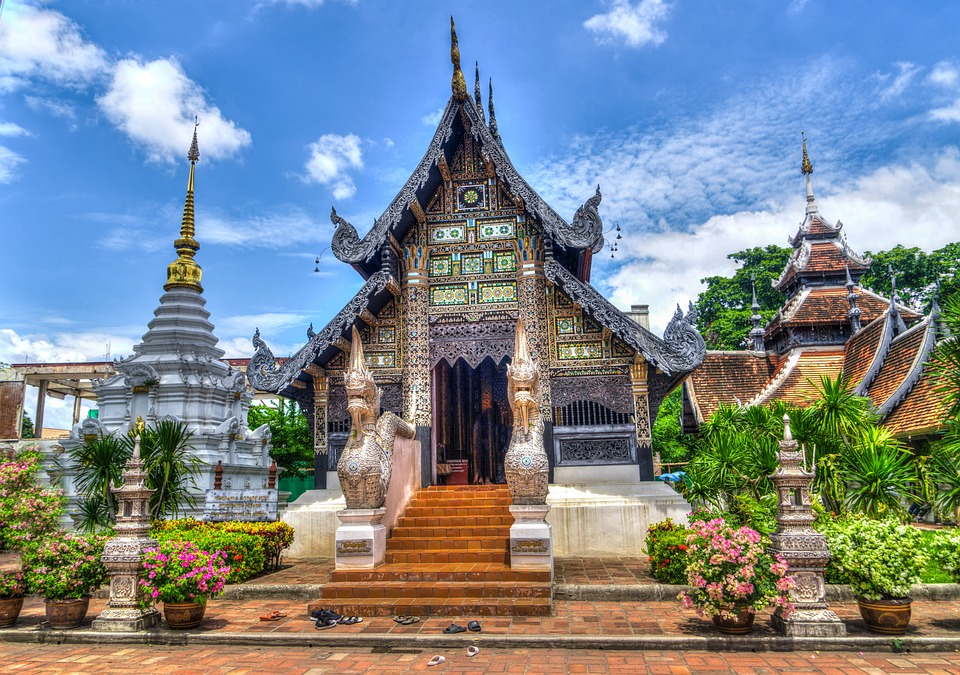
- Population: 71,801,279
- Area: 513,120 SQ.KM
- Capital: Bangkok
- Region: Asia
- GDP Per Capita, PPP: $23,423
- GDP: $515 billion
- Overall Rank: 29
Thailand is one of most affordable countries to travel and least expensive countries to live in. Thailand is a country in Southeast Asia on the Indochinese Peninsula. Bangkok is the state capital and largest city. Thailand comprises several distinct geographic regions, partly corresponding to the provincial groups. Thailand’s climate is influenced by monsoon winds that have a seasonal character. Most of the country is classified as Köppen’s tropical savanna climate.
Thailand is an emerging economy and is considered a newly industrialised country. The economy of Thailand is heavily export-dependent, with exports accounting for more than two-thirds of gross domestic product (GDP). Thailand exports over US$105 billion worth of goods and services annually. Thailand is the second largest economy in Southeast Asia after Indonesia. Thailand ranks midway in the wealth spread in Southeast Asia as it is the fourth richest nation according to GDP per capita, after Singapore, Brunei, and Malaysia. Tourism makes up about 6% of the country’s economy.
Top 2. Vietnam
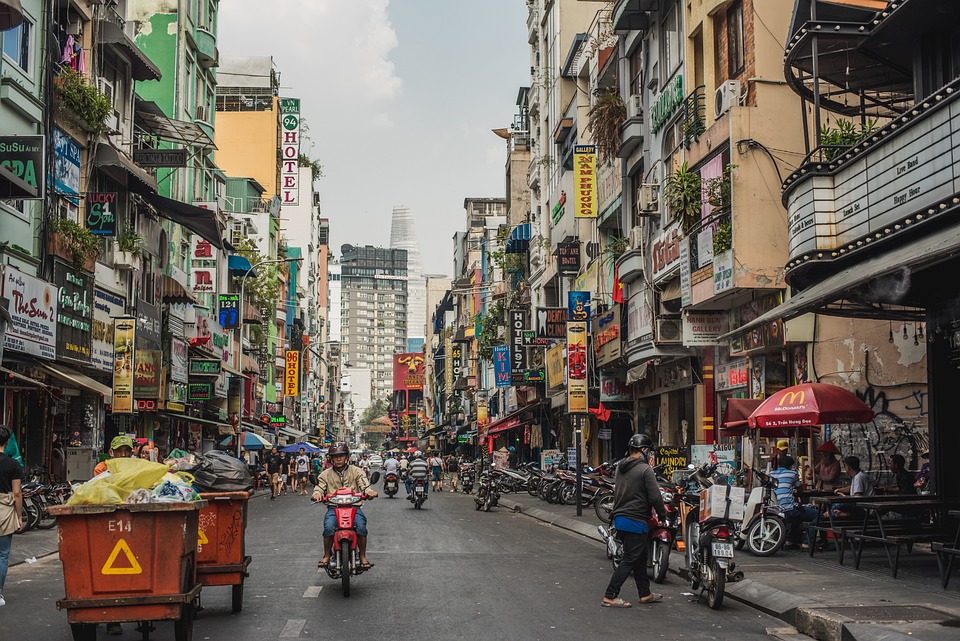
- Population: 98,858,950
- Area: 331,210 SQ.KM
- Capital: Hanoi
- Region: Asia
- GDP Per Capita, PPP: $15,194
- GDP: $430 billion
- Overall Rank: 44
Vietnam is a country at the eastern edge of mainland Southeast Asia. It is one of least expensive countries to visit and countries with cheapest cost of living. One of the two Marxist – Leninist states in Southeast Asia, Vietnam shares land borders with China to the north, and Laos and Cambodia to the west. Its capital is Hanoi and its largest city is Ho Chi Minh City commonly known as Saigon. Due to differences in latitude and the marked variety in topographical relief, Vietnam’s climate tends to vary considerably for each region.
Throughout the history of Vietnam, its economy has been based largely on agriculture – primarily wet rice cultivation. Since reunification, the country’s economy is shaped primarily by the CPV through Five Year Plans decided upon at the plenary sessions of the Central Committee and national congresses. The collectivisation of farms, factories, and capital goods was carried out as part of the establishment of central planning, with millions of people working for state enterprises.
Top 3. India
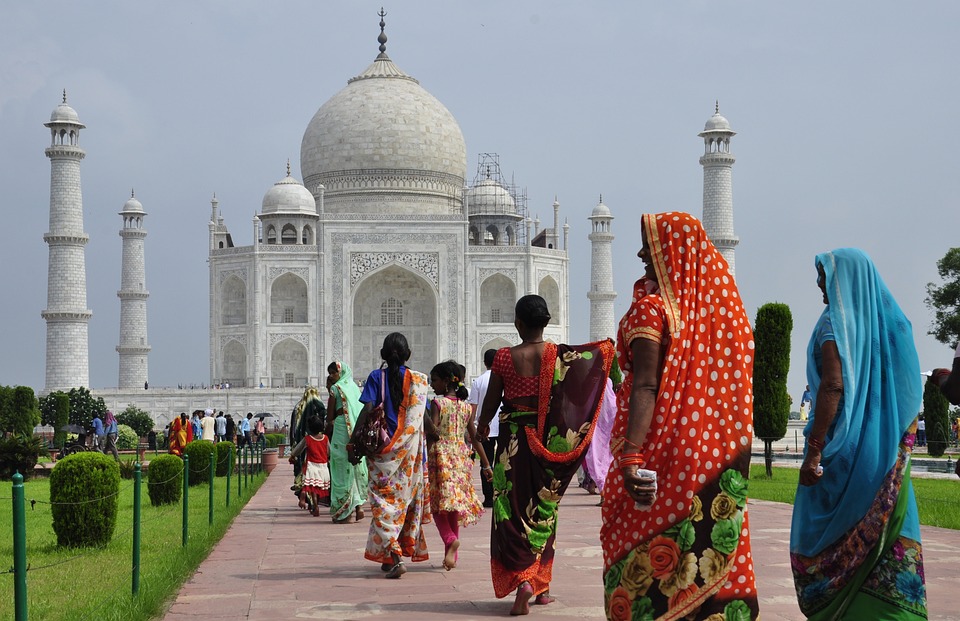
- Population: 1,428,627,663
- Area: 3,287,263 SQ.KM
- Capital: New Delhi
- Region: Asia
- GDP Per Capita, PPP: $10,176
- GDP: $3.55 trillion
- Overall Rank: 33
India is a country in South Asia. It is one of cheapest country in the world and lowest cost of living countries. It is the seventh-largest country in the world by area and the most populous country. India accounts for the bulk of the Indian subcontinent, lying atop the Indian tectonic plate, a part of the Indo – Australian Plate. According to the International Monetary Fund (IMF), the Indian economy in 2024 was nominally worth $3.94 trillion which was the fifth – largest economy by market exchange rates and is, at around $15.0 trillion, the third-largest by purchasing power parity (PPP). With its average annual GDP growth rate of 5.8% over the past two decades, and reaching 6.1% during 2011 – 2012, India is one of the world’s fastest-growing economies.
However, due to its low GDP per capita which ranks 136th in the world in nominal per capita income and 125th in per capita income adjusted for purchasing power parity (PPP)—the vast majority of Indians fall into the low – income group. Despite economic growth during recent decades, India continues to face socio – economic challenges.
Top 4. Philippines
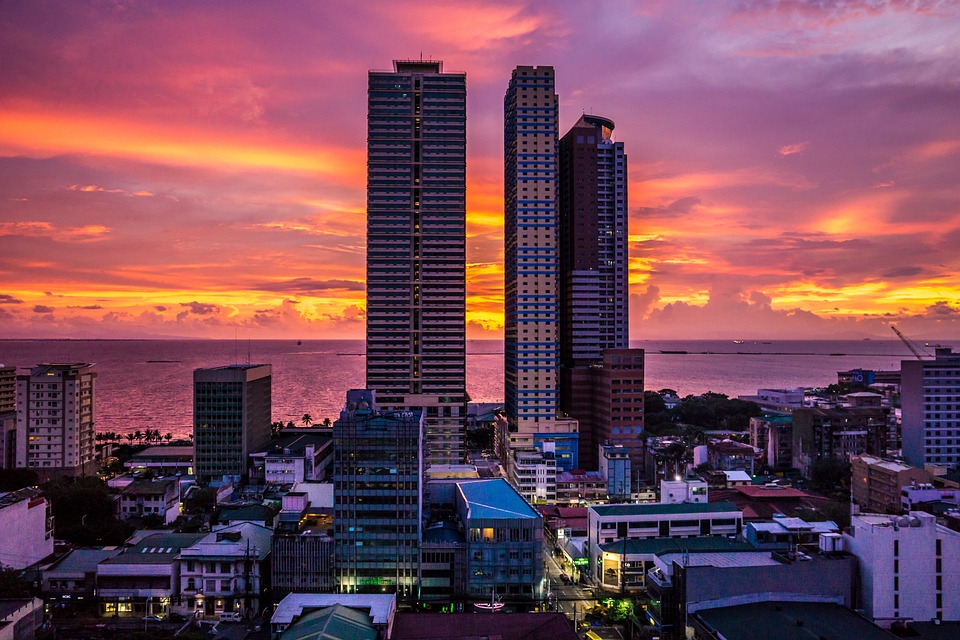
- Population: 117,337,368
- Area: 300,000 SQ.KM
- Capital: Manila
- Region: Asia
- GDP Per Capita, PPP: $10,755
- GDP: $437 billion
- Overall Rank: 45
Philippines is an archipelagic country in Southeast Asia. It is one of most affordable country to live and countries with lowest cost of living. In the western Pacific Ocean, it consists of 7,641 islands, with a total area of roughly 300,000 square kilometers, which are broadly categorized in three main geographical divisions from north to south: Luzon, Visayas, and Mindanao. Philippines has a tropical maritime climate which is usually hot and humid.
Philippines is a popular retirement destination for foreigners because of its climate and low cost of living. Philippines has significant cultural diversity, reinforced by the country’s fragmented geography. Spanish and American cultures profoundly influenced Filipino culture as a result of long colonization.
Top 5. Malaysia
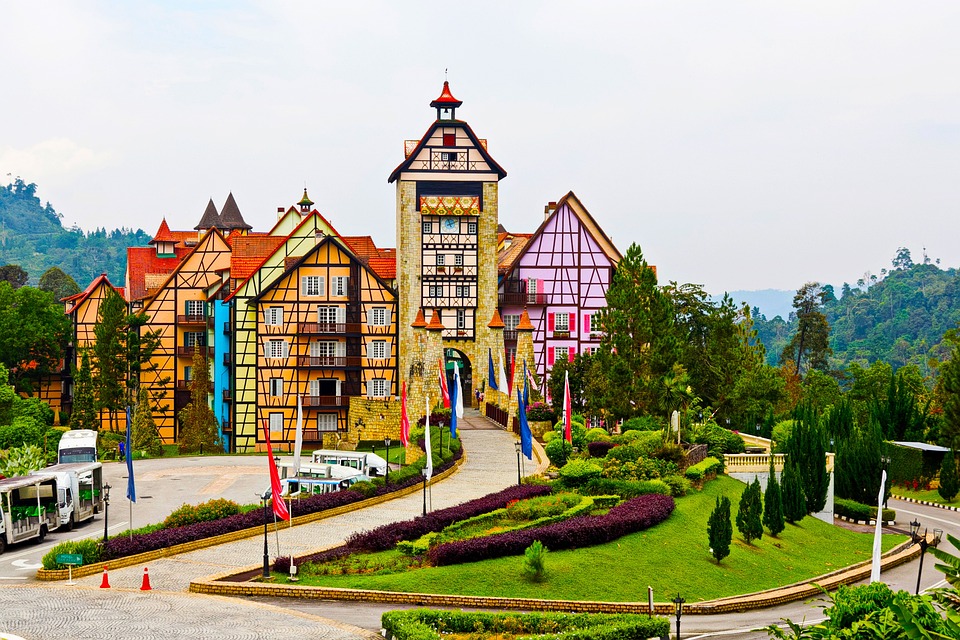
- Population: 34,308,525
- Area: 329,847 SQ.KM
- Capital: Kuala Lumpur
- Region: Asia
- GDP Per Capita, PPP: $37,248
- GDP: $400 billion
- Overall Rank: 38
Malaysia is a country in Southeast Asia. It is one of cheaper country in the world and countries with the lowest cost of living. A federal constitutional monarchy, it consists of 13 states and three federal territories, separated by the South China Sea into two regions: Peninsular Malaysia and Borneo’s East Malaysia. Peninsular Malaysia shares a land and maritime border with Thailand and maritime borders with Singapore, Vietnam, and Indonesia.
Malaysia has a multi – ethnic, multicultural, and multilingual society. Substantial influence exists from Chinese and Indian culture, dating back to when foreign trade began. Badminton matches attract thousands of spectators and since 1948 Malaysia has been one of four countries to hold the Thomas Cup, the world team championship trophy of men’s badminton.
Top 6. Indonesia
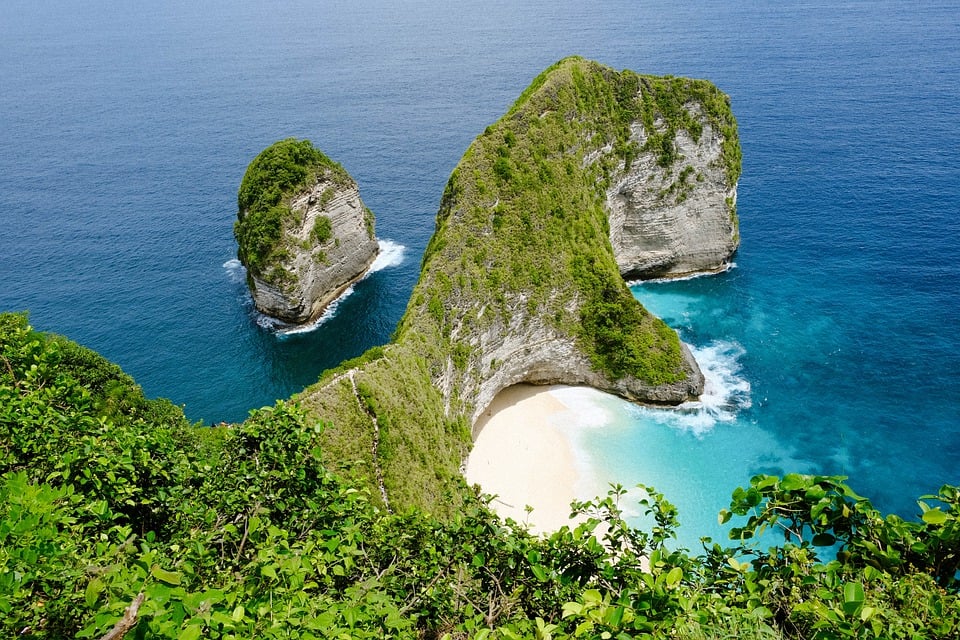
- Population: 277,534,122
- Area: 1,904,569 SQ.KM
- Capital: Jakarta
- Region: Asia
- GDP Per Capita, PPP: $15,613
- GDP: $1.37 trillion
- Overall Rank: 41
Indonesia is a country in Southeast Asia and Oceania, between the Indian and Pacific oceans. It is one of least expensive country to visit and cheapest country to buy a house. It consists of over 17,000 islands, including Sumatra, Java, Sulawesi, and parts of Borneo and New Guinea. Indonesia is the world’s largest archipelagic state and the 14th – largest country by area, at 1,904,569 square kilometres. Indonesia lies along the equator, and its climate tends to be relatively even year-round.
Nature and culture are prime attractions of Indonesian tourism. The country has a well – preserved natural ecosystem with rainforests stretching over about 57% of Indonesia’s land. Forests on Sumatra and Kalimantan are examples of popular destinations, such as the Orangutan wildlife reserve. Moreover, Indonesia has one of the world’s longest coastlines measuring 54,716 kilometres. The ancient Borobudur and Prambanan temples, as well as Toraja and Bali with their traditional festivities, are some of the popular destinations for cultural tourism.
Top 7. Mexico
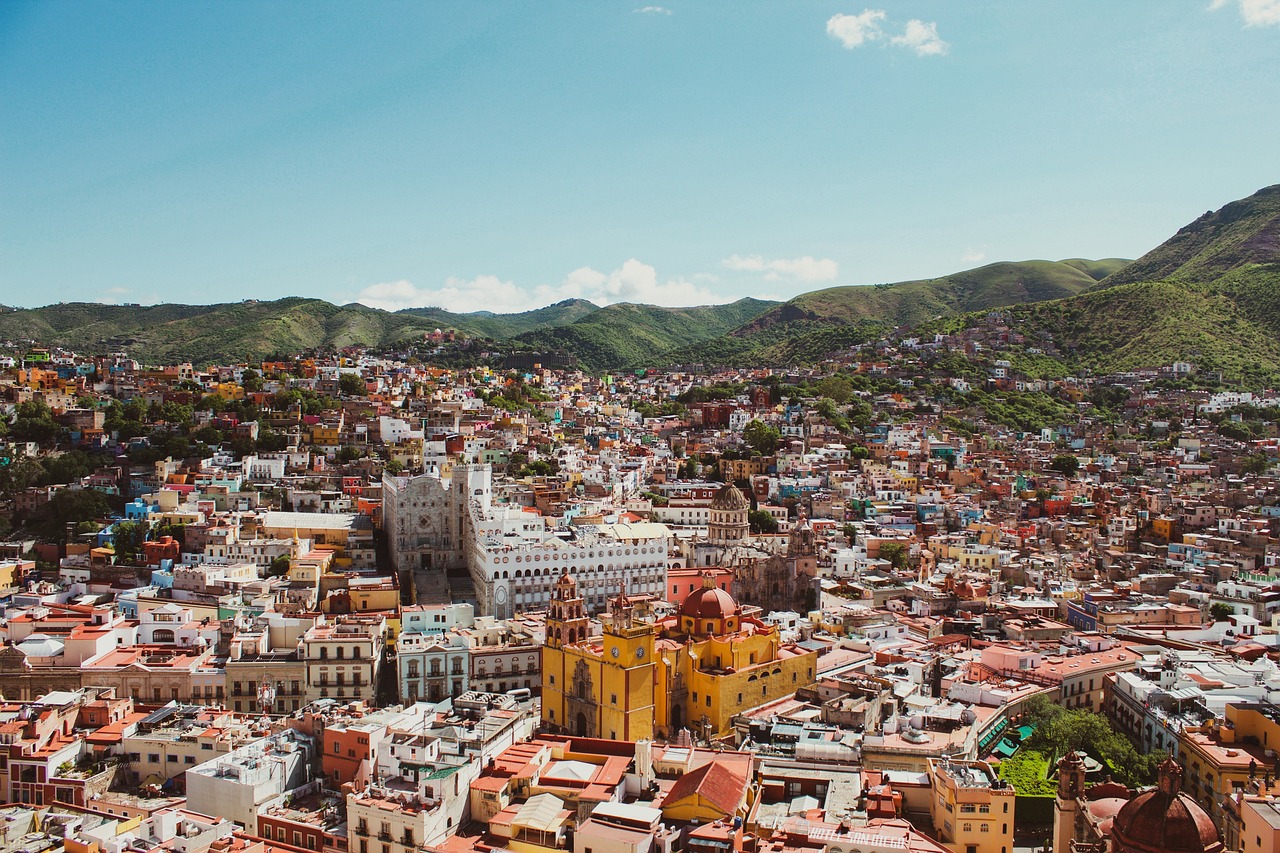
- Population: 128,455,567
- Area: 1,964,375 SQ.KM
- Capital: Mexico City
- Region: North America
- GDP Per Capita, PPP: $25,602
- GDP: $1.79 trillion
- Overall Rank: 34
Mexico is a country in the southern portion of North America. It is one of low cost of living countries and most affordable country to live in. Almost all of Mexico lies in the North American Plate, with small parts of the Baja California peninsula on the Pacific and Cocos Plates. The climate of Mexico is varied due to the country’s size and topography. Tropic of Cancer effectively divides the country into temperate and tropical zones.
Mexico was the 6th most visited country in the world and had the 15th highest income from tourism in the world which is also the highest in Latin America. The vast majority of tourists come to Mexico from the United States and Canada followed by Europe and Asia. Mexican culture reflects a long and complex history of interactions between various peoples through migration, conquest, and trade. The origin of the current Mexican cuisine was established during the Spanish colonial era, a mixture of the foods of Spain with native indigenous ingredients.
Top 8. China
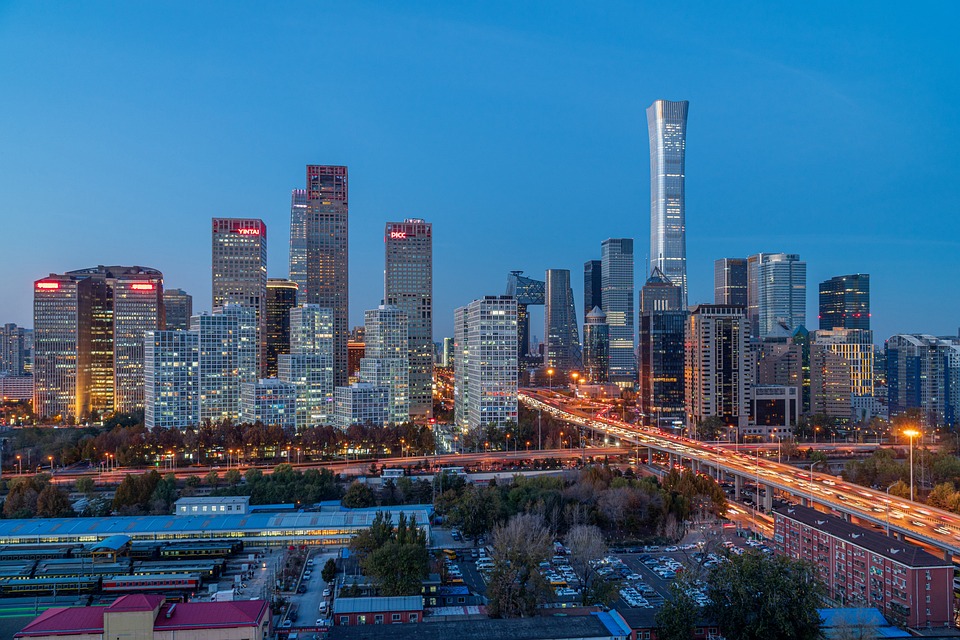
- Population: 1,410,710,000
- Area: 9,596,960 SQ.KM
- Capital: Beijing
- Region: Asia
- GDP Per Capita, PPP: $24,558
- GDP: $17.8 trillion
- Overall Rank: 16
China, officially the People’s Republic of China, is a country in East Asia. It is one of cheapest and safest places to live in the world. With a population exceeding 1.4 billion, it is the second – most populous country after India, representing 17.4% of the world population. China spans the equivalent of five time zones and borders fourteen countries by land. With an area of nearly 9.6 million square kilometers, it is the third – largest country by total land area. China’s landscape is vast and diverse, ranging from the Gobi and Taklamakan Deserts in the arid north to the subtropical forests in the wetter south. China’s climate is mainly dominated by dry seasons and wet monsoons, which lead to pronounced temperature differences between winter and summer.
China hosts the world’s second-largest number of World Heritage Sites (56) after Italy, and is one of the most popular tourist destinations (first in the Asia-Pacific). Since ancient times, Chinese culture has been heavily influenced by Confucianism. Chinese culture, in turn, has heavily influenced East Asia and Southeast Asia. Chinese cuisine is highly diverse, drawing on several millennia of culinary history and geographical variety, in which the most influential are known as the “Eight Major Cuisines”.
Top 9. Turkey
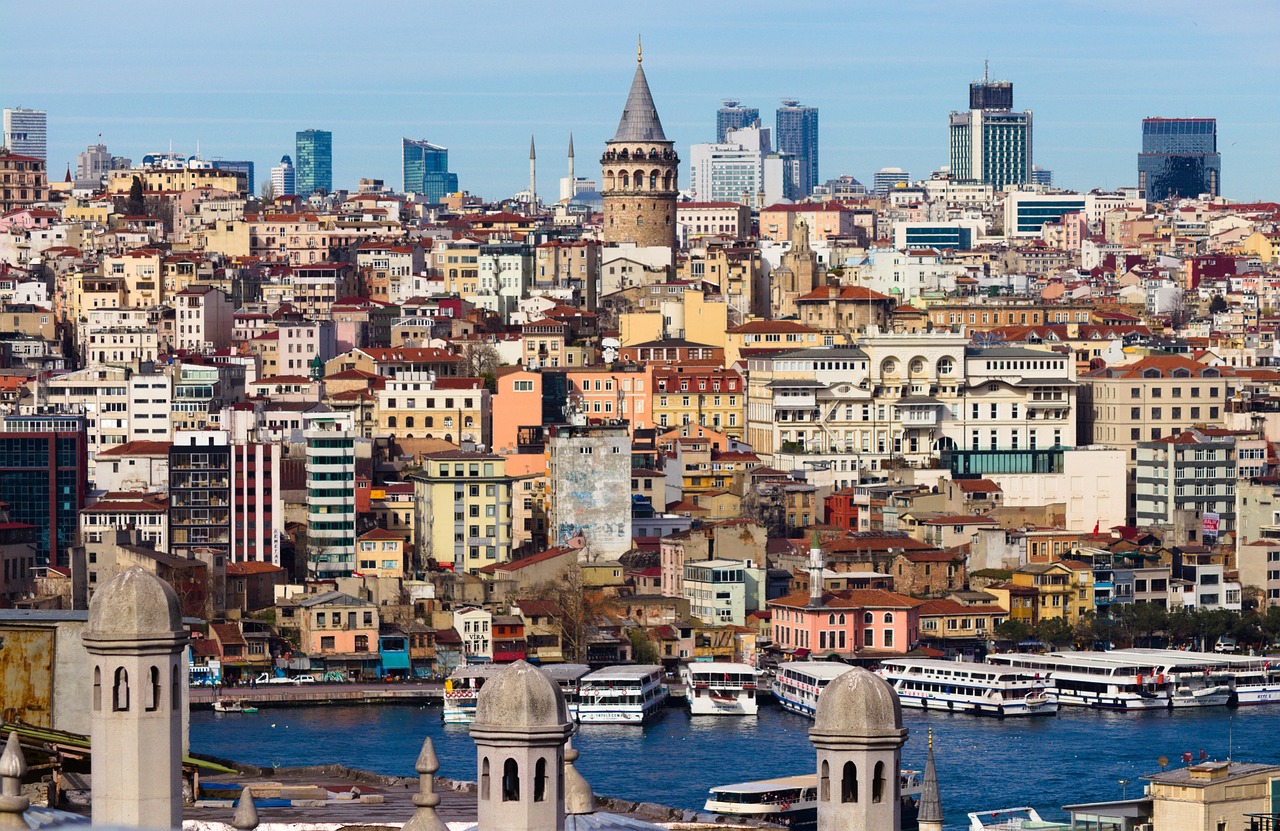
- Population: 85,326,000
- Area: 783,562 SQ.KM
- Capital: Ankara
- Region: Middle East
- GDP Per Capita, PPP: $44,151
- GDP: $1.11 trillion
- Overall Rank: 31
Turkey is a country mainly located in Anatolia in West Asia, with a smaller part called East Thrace in Southeast Europe. It is one of lowest cost of living countries and inexpensive place to live. With Turkish straits and Sea of Marmara in between, Turkey bridges Western Asia and Southeastern Europe. The coastal areas of Turkey bordering the Aegean and Mediterranean Seas have a temperate Mediterranean climate, with hot, dry summers and mild to cool, wet winters.
Turkey is an upper-middle-income country and an emerging market. A founding member of the OECD and G20, it is the 17th – largest economy by nominal and the 12th – largest economy by PPP – adjusted GDP in the world. It is classified among newly industrialized countries. Services account for the majority of GDP, whereas industry accounts for more than 30%. Turkey has a diversified economy, main industries include automobiles, electronics, textiles, construction, steel, mining, and food processing.
Top 10. Bangladesh
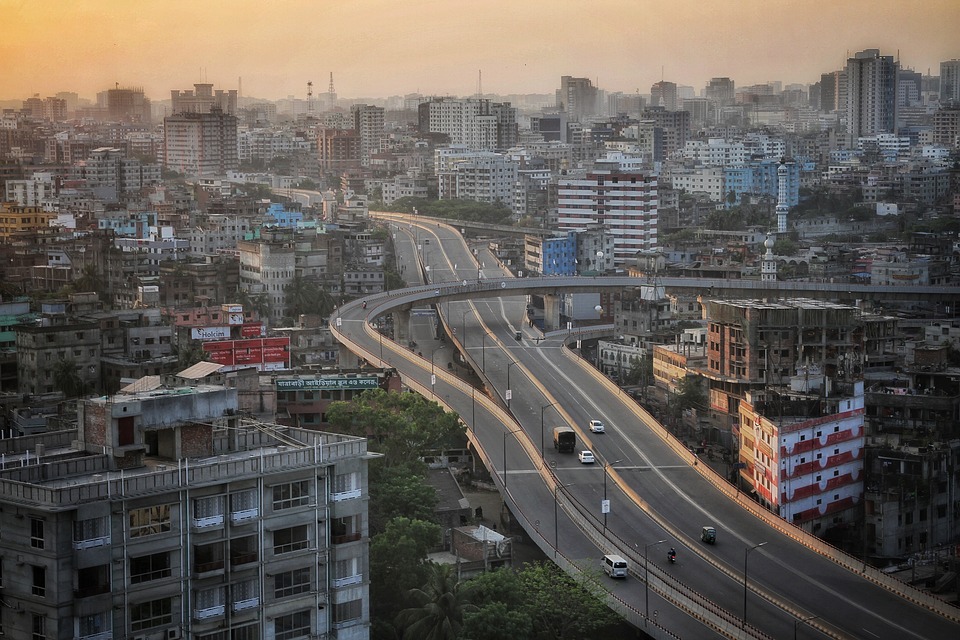
- Population: 172,954,319
- Area: 148,460 SQ.KM
- Capital: Dhaka
- Region: Asia
- GDP Per Capita, PPP: $9,066
- GDP: $437 billion
- Overall Rank: 71
Bangladesh is a country in South Asia. It is one of the most cheapest country in the world and least expensive countries to live. Bangladesh is the second largest economy in South Asia after India. The country has outpaced India and Pakistan in terms of per capita income. According to the World Bank, “when the newly independent country of Bangladesh was born on December 16, 1971, it was the second poorest country in the world – making the country’s transformation over the next 50 years one of the great development stories. Since then, poverty has been cut in half at record speed. Enrollment in primary school is now nearly universal. Hundreds of thousands of women have entered the workforce. Steady progress has been made on maternal and child health.
Average Cost of Living and Salary Per Month in Cheapest Country to Live in
Here is a table of the average cost of living per month (in USD) including major categories such as accommodation, food, transportation, education, healthcare, entertainment, and the average salary per month for the cheapest country to live in.
| Country | Accommodation (USD) | Food (USD) | Transportation (USD) | Education (USD) | Healthcare (USD) | Entertainment (USD) | Total Cost of Living (USD) | Average Salary (USD) |
|---|---|---|---|---|---|---|---|---|
| Thailand | 200-500 | 150-250 | 30-50 | 50-100 | 30-70 | 50-100 | 510-1070 | 600-1000 |
| Vietnam | 150-400 | 100-200 | 20-40 | 30-80 | 20-50 | 40-80 | 360-850 | 400-700 |
| India | 100-300 | 100-150 | 15-30 | 20-50 | 15-30 | 30-60 | 275-620 | 250-600 |
| Philippines | 150-400 | 100-200 | 20-40 | 50-100 | 20-50 | 40-80 | 380-870 | 300-600 |
| Malaysia | 200-500 | 150-250 | 30-50 | 50-100 | 30-70 | 50-100 | 510-1070 | 800-1200 |
| Indonesia | 150-400 | 100-200 | 20-40 | 30-80 | 20-50 | 40-80 | 360-850 | 400-700 |
| Mexico | 200-500 | 150-250 | 30-60 | 50-100 | 30-70 | 50-100 | 510-1080 | 600-1000 |
| China | 300-800 | 150-300 | 50-100 | 100-300 | 50-100 | 100-200 | 750-1800 | 800-1500 |
| Turkey | 200-500 | 150-250 | 30-60 | 50-100 | 30-70 | 50-100 | 510-1080 | 400-800 |
| Bangladesh | 100-300 | 80-150 | 15-30 | 20-50 | 15-30 | 20-50 | 240-610 | 150-400 |
Things to Consider Before Moving to Cheapest Country
- Economic and Political Stability
A country’s affordability might come at the cost of economic instability. Frequent political upheavals, civil unrest, or corruption can affect safety and the quality of life.
- Healthcare System
Ensure you have health insurance that covers emergencies, routine checkups, and specialized care.
- Language and Cultural Barriers
Moving to a country where you don’t speak the local language can lead to communication challenges. Understand and respect the country’s traditions, customs, and social norms.
- Job and Income Opportunities
If you plan to work, research job opportunities in your field and whether the country allows foreigners to work in those roles.
- Safety and Security
Look into crime statistics, focusing on issues like theft, scams, or violent crime. Some affordable countries may have higher crime rates in certain areas, so choose your location carefully.
Conclusion
As we’ve seen, the allure of living in an affordable country is more than just about saving money – it’s about unlocking a lifestyle that’s rich in culture, experiences, and possibilities. Whether it’s the low housing costs of Vietnam, the vibrant street food culture in Mexico, or the warm tropical lifestyle in Thailand, the cheapest countries to live in offer far more than just financial relief. By understanding the key factors that make these countries affordable, evaluating average living costs, and carefully considering your personal circumstances before making the move, you can set yourself up for a fulfilling and financially sustainable adventure. However, the decision to relocate is not one to be taken lightly – ensure that you have a solid plan, whether it’s for long-term living, work, or travel, and take the time to immerse yourself in a place that feels like home. As you embark on your journey to find the ideal destination, remember that sometimes, the most valuable experiences in life don’t come with a hefty price tag—they come from the connections you make, the stories you create, and the memories you cherish along the way.
After you have decided which cheapest country to live in, accommodation is the first and foremost thing to consider. uhomes.com is a dynamic rental platform designed to meet the needs of renters who value both affordability and quality. Whether you’re a student, a working professional, or a family, uhomes.com offers a wide range of rental properties that cater to different budgets and preferences in cheapest country to live in.
FAQ
Retiring abroad on $1,000 per month doesn’t mean sacrificing quality of life. Many countries offer excellent health care, infrastructure and amenities at a fraction of the cost compared to the U.S. The cheapest places to retire abroad include Panama, the Philippines, Portugal, Malaysia, Mexico, Thailand and Vietnam.
Canada is one of the easiest countries for Americans to move to with plenty of immigration pathways for skilled workers and those with close family ties. As the closest neighbour to the US, there are more opportunities for cross-border employment from US-based companies, making transfer a possibility.
Most Americans moving abroad look north to Canada or across the Atlantic to Europe, where popular destinations include Greece, Italy, Malta, Portugal, and Spain, according to Henley & Partners.
For those who wish to retire to safe havens that offer cheap living expenses, some of the cheapest and safest countries to retire to include Indonesia, Ghana, Romania, North Macedonia, and Vietnam.
Data drawn from an analysis of over 500,000 property listings reveals that Madagascar has the world’s cheapest apartment rental. For house-hunters or ‘staycationers’, the lowest rental price in the country is 1500 Malagasy ariary – or about 60 US cents per month.
Switzerland
Switzerland is indeed a good option to consider relocating to; at the same time, it is the most expensive country in the world to live in. Cost of Groceries: High; a basic grocery bill for a family can range around CHF 800-1,000 monthly.
Switzerland’s freely elected officials determine and implement national and local policy through a decentralized governance system. The 26 cantons have significant control over economic and social policy, with the federal government’s powers largely limited to foreign affairs and some economic matters.







